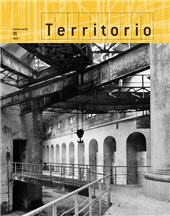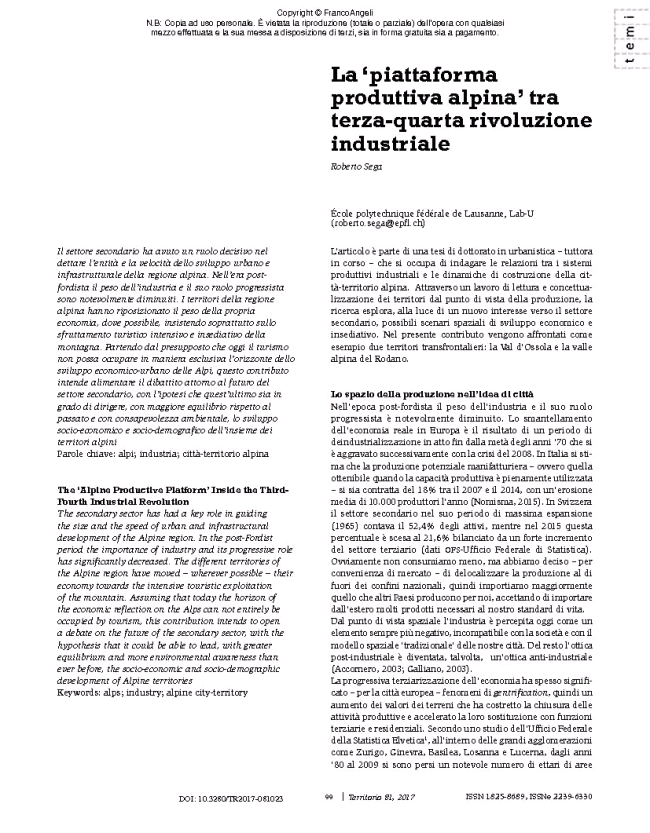La piattaforma produttiva alpina tra terza-quarta rivoluzione industriale
99-104 p.
Il settore secondario ha avuto un ruolo decisivo nel dettare l'entità e la velocità dello sviluppo urbano e infrastrutturale della regione alpina. Nell'era postfordista il peso dell'industria e il suo ruolo progressista sono notevolmente diminuiti. I territori della regione alpina hanno riposizionato il peso della propria economia, dove possibile, insistendo soprattutto sullo sfruttamento turistico intensivo e insediativo della montagna. Partendo dal presupposto che oggi il turismo non possa occupare in maniera esclusiva l'orizzonte dello sviluppo economico-urbano delle Alpi, questo contributo intende alimentare il dibattito attorno al futuro del settore secondario, con l'ipotesi che quest'ultimo sia in grado di dirigere, con maggiore equilibrio rispetto al passato e con consapevolezza ambientale, lo sviluppo socio-economico e socio-demografico dell'insieme dei territori alpini. [Testo dell'editore].
The secondary sector has had a key role in guiding the size and the speed of urban and infrastructural development of the Alpine region. In the post-Fordist period the importance of industry and its progressive role has significantly decreased. The different territories of the Alpine region have moved - wherever possible - their economy towards the intensive touristic exploitation of the mountain. Assuming that today the horizon of the economic reflection on the Alps can not entirely be occupied by tourism, this contribution intends to open a debate on the future of the secondary sector, with the hypothesis that it could be able to lead, with greater equilibrium and more environmental awareness than ever before, the socio-economic and socio-demographic development of Alpine territories [Publishers' text].
Fa parte di
Territorio : 81, 2, 2017-
Articoli dello stesso fascicolo (disponibili singolarmente)
-
Informazioni
Codice DOI: 10.3280/TR2017-081023
ISSN: 2239-6330
MATERIE
PAROLE CHIAVE
- Alpi, industria, città-territorio alpina
- Alps, industry, alpine city-territory



